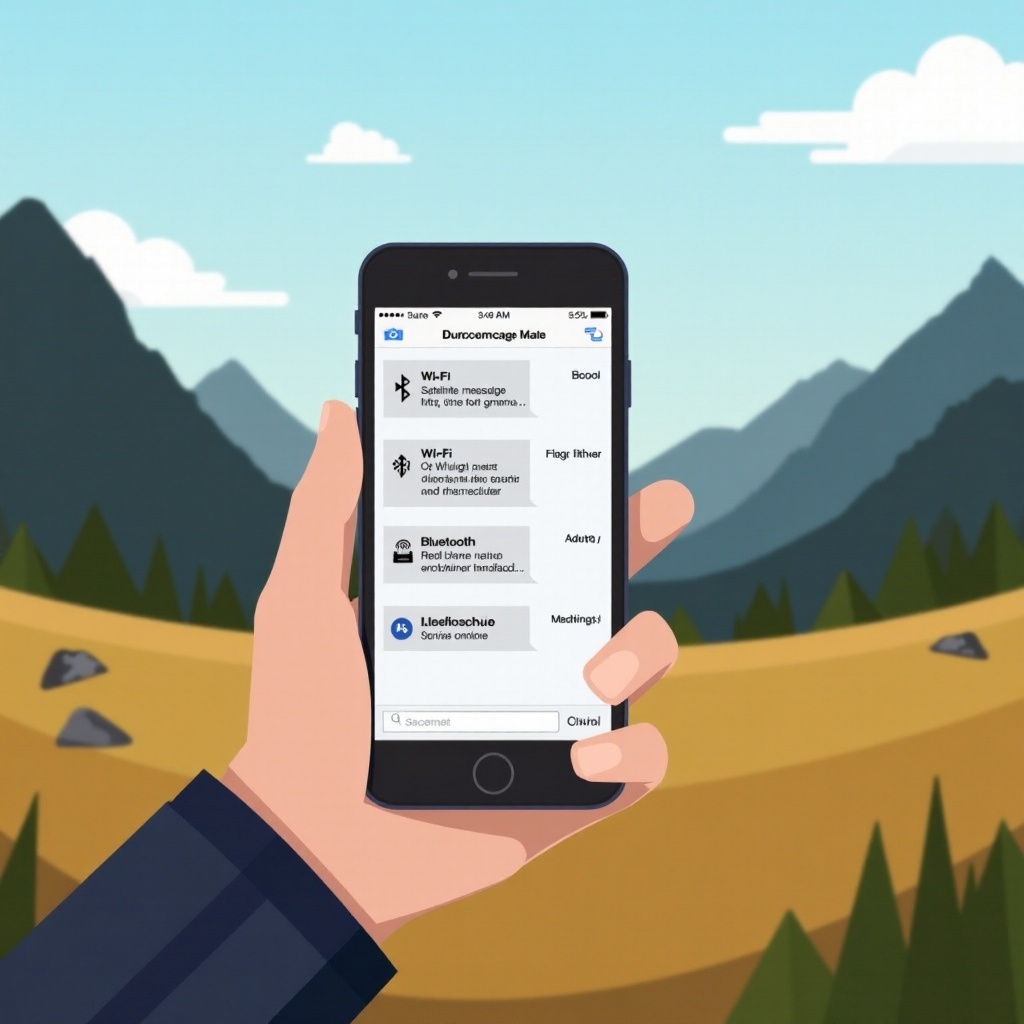Introduction
In today’s interconnected world, lack of service shouldn’t sever your communication. Whether you’re trekking through a remote area or suffering from a temporary network outage, staying connected with friends and family is vital. It might seem challenging, but with the right tools and methods, sending a text without service is entirely achievable. This guide delves into innovative means to relay your messages wirelessly. We’ll explore Wi-Fi-based applications, peer-to-peer networks, and satellite technology, providing you the knowledge to remain connected even without cellular service. Let’s embark on this journey to discover how you can send texts no matter where you are.

Understanding Text Messaging and the Need for Service
Traditional text messaging hinges on cellular networks for data transmission, allowing the seamless flow of SMS and MMS. Typically, these communications demand a connection to your mobile provider’s network, which then relies on cellular towers.
Yet, these networks can falter in certain situations. Whether due to location constraints, natural disasters, or international travel, finding yourself without signal can be disruptive. Exploring alternative solutions, therefore, becomes a necessity. Today’s technological landscape offers numerous options to bridge this gap, thus ensuring continuous communication even without traditional services. Grasping these alternatives is crucial for sustaining contact in any environment.
Alternative Methods for Sending Texts Without Service
When cellular networks are unavailable, leveraging alternative communication methods becomes critical. Options span from utilizing Wi-Fi networks to harnessing satellite connections, providing various paths to maintaining contact.
Wi-Fi-Based Messaging Apps
One of the simplest solutions is using Wi-Fi-based messaging applications. These apps connect to the internet through Wi-Fi, enabling text exchanges without cellular dependency. For instance, Apple’s iMessage operates through such connections. As long as there’s a Wi-Fi signal, sending texts is straightforward and efficient.
Facebook Messenger, WhatsApp, and Similar Platforms
Other popular messaging platforms like Facebook Messenger and WhatsApp also operate via internet connections. These services allow global text and multimedia exchanges seamlessly. Ensure you and your contacts use the same platform for smooth communication.
Peer-to-Peer Messaging Networks
A different approach involves peer-to-peer (P2P) messaging networks such as FireChat or Bridgefy. These networks bypass traditional internet connections by utilizing Bluetooth or Wi-Fi Direct. This technology connects you to nearby users, proving especially beneficial in crowded or isolated regions lacking service coverage.

Setting Up Messaging Apps for Offline Use
To maximize these alternative communication methods, it’s essential to configure your apps for offline usage.
Step-by-Step Guide for Popular Apps
Follow these steps to ensure your applications are prepared:
- Download the App: Source your chosen app from a reputable provider and download it.
- Install the App: Follow installation instructions for proper setup.
- Create or Sign In to an Account: Use your existing credentials or establish a new account.
- Enable Offline Features: Navigate the app settings to activate offline messaging capabilities.
Ensuring App Permissions and Settings
Beyond mere installation, proper configuration is key:
- Grant Necessary Permissions: Some applications may require access to contacts or location for smoother offline operation.
- Adjust Settings: Optimize app settings for offline functionality, including enabling notifications and updating via Wi-Fi.

Leveraging Satellite Communication
When typical connectivity networks aren’t an option, satellite communication emerges as a robust alternative.
Our Introduction to Satellite Texting
Satellite texting employs devices that communicate over satellite networks, eschewing reliance on traditional land-based cell towers. These devices tap directly into orbiting satellites, offering message delivery anywhere globally.
How Satellite Devices Operate
Devices like Garmin’s InReach communicate by transmitting data to satellites that then relay messages to earth-based receivers. Suiting adventurers in far-flung locales or situations where conventional networks are inoperative, they require specialized plans but provide invaluable peace of mind.
Safety and Privacy Considerations
While alternative messaging methods expand connectivity, they also carry inherent risks. Prioritizing data protection when using public networks or satellite services becomes imperative.
Protecting Data on Public Wi-Fi
Public Wi-Fi networks are often insecure, potentially exposing your communications. Employ a Virtual Private Network (VPN) service to encrypt your data, ensuring secure exchanges over open internet connections. Regularly update your apps to shield them from vulnerabilities.
Maintaining Privacy with Alternative Methods
Certain messaging platforms might necessitate sharing personal information. Review each application’s privacy policy diligently to confirm your data security. Disabling unnecessary sharing features further enhances your privacy.
Conclusion
Sending texts without service isn’t merely advantageous; it’s essential in maintaining consistent communication today. By capitalizing on available alternatives, including Wi-Fi-based apps, peer-to-peer networks, and satellite devices, you secure your connectivity irrespective of location. Whether for emergencies, travel, or day-to-day activities, these methods guarantee you stay in touch.
Frequently Asked Questions
Can I send a text without any Internet connection?
Yes. Apps like Bridgefy enable texting without internet, relying on Bluetooth or Wi-Fi Direct connections.
Are there any free apps for sending texts without service?
Yes. Applications like Facebook Messenger, WhatsApp, and several peer-to-peer messaging services offer free communication without cellular service.
What should I consider when using messaging apps over public Wi-Fi?
Utilize a VPN to secure your data. Stay informed about app privacy policies, and configure settings to restrict unnecessary data sharing.
